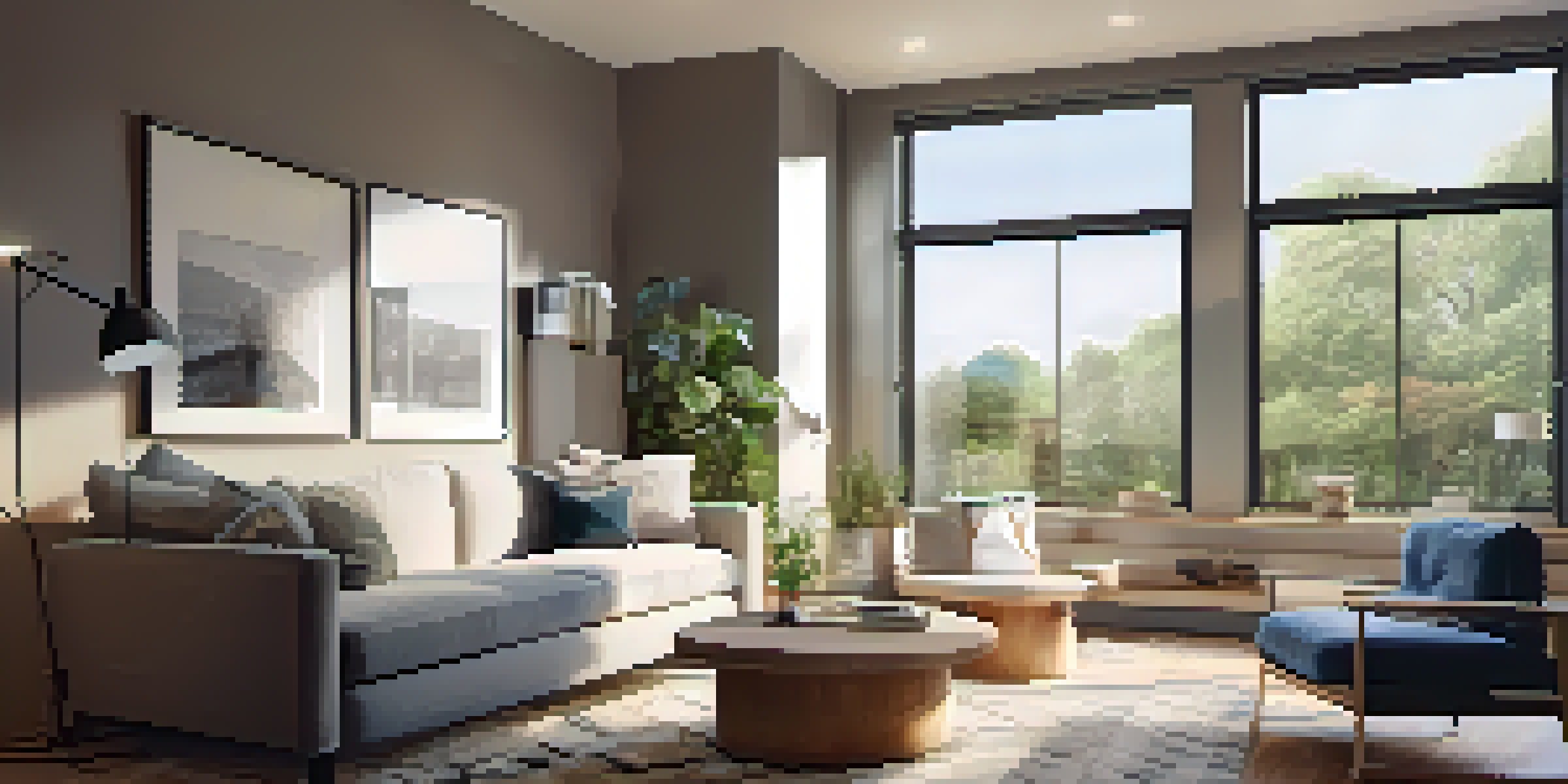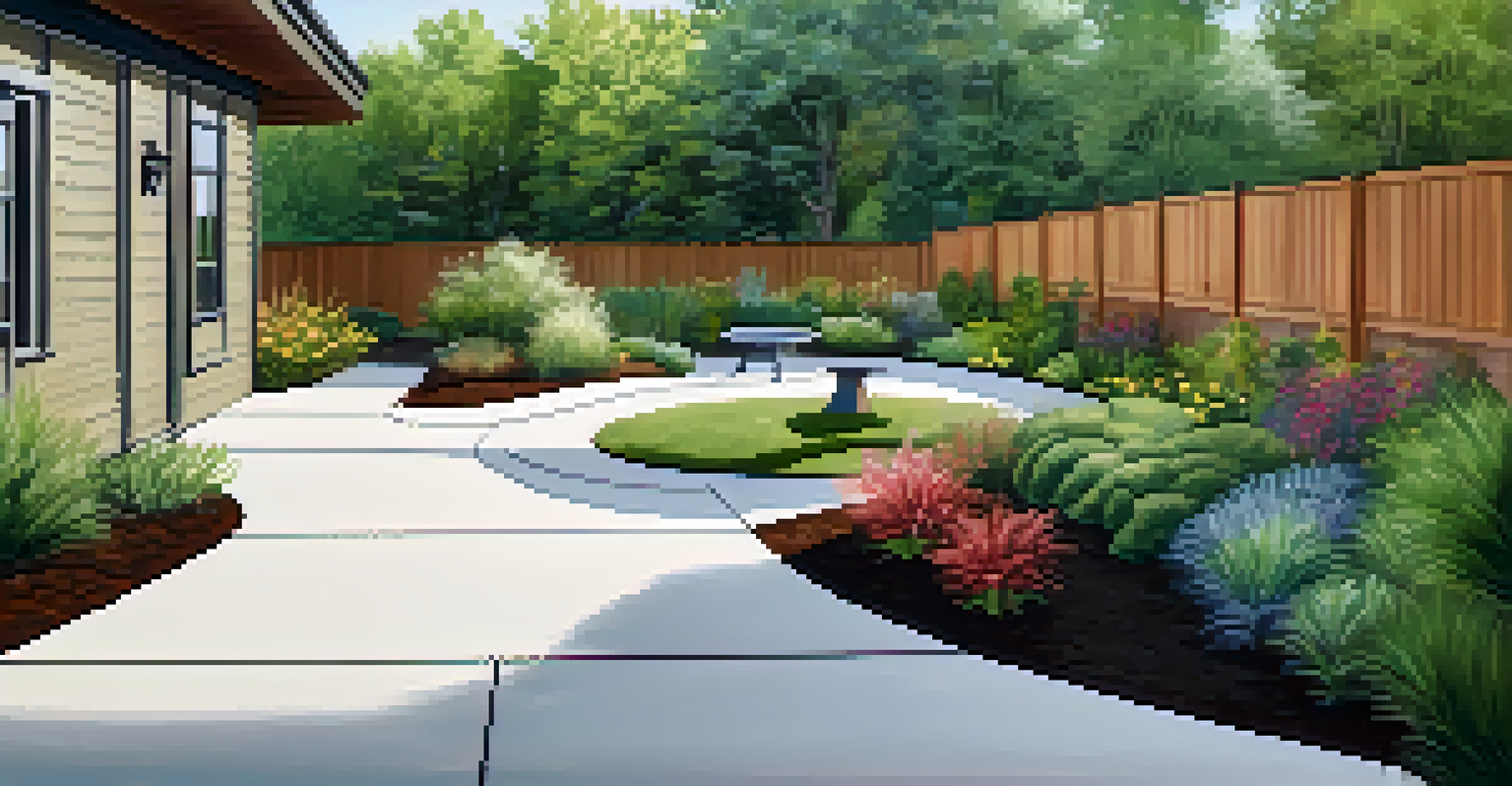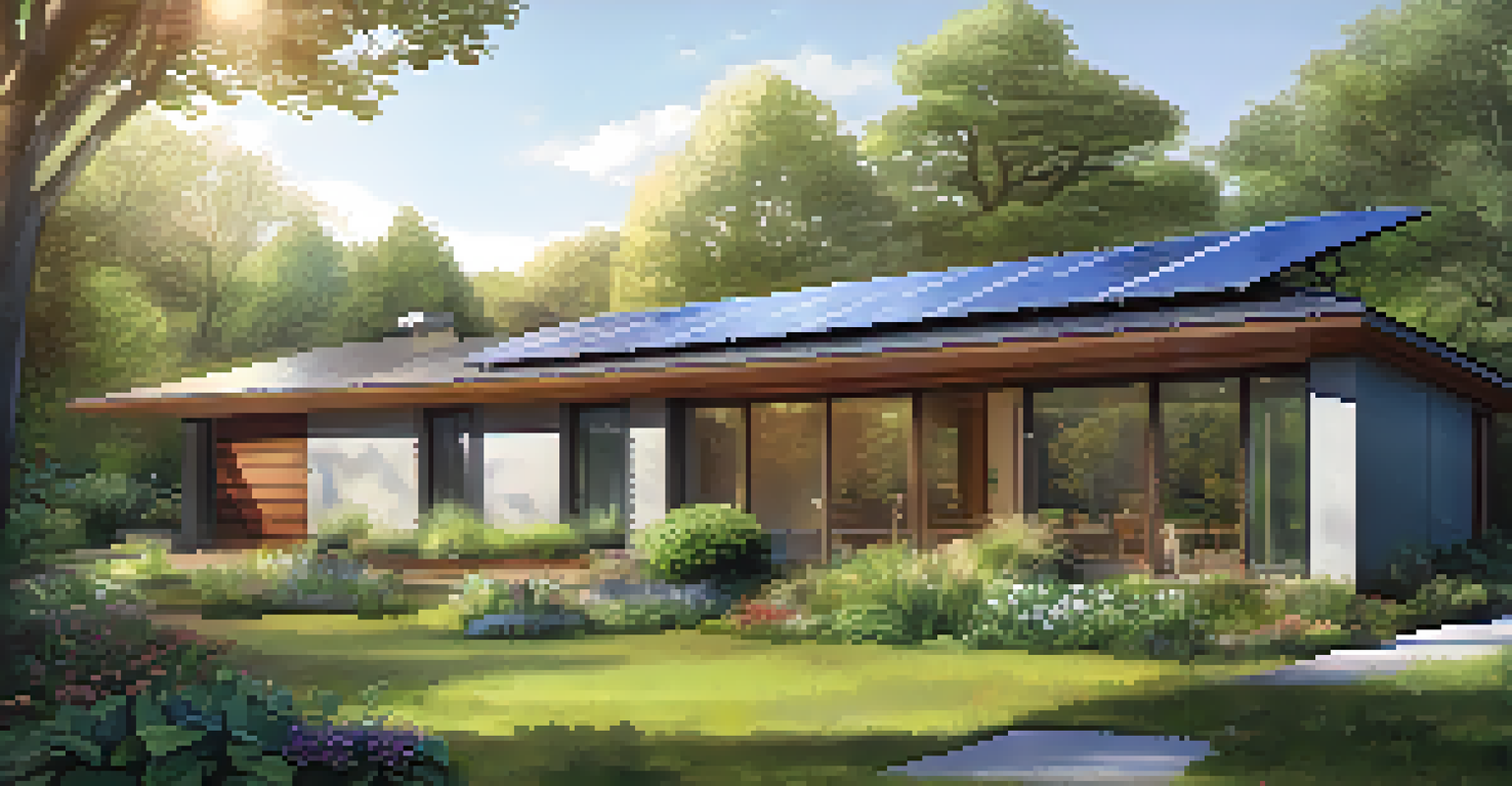How to Incorporate Energy Efficiency into New Home Builds

Understanding Energy Efficiency in Home Design
Energy efficiency in home design means using less energy to provide the same service, ultimately saving money and reducing environmental impact. It involves thoughtful planning and the integration of sustainable materials and technologies. By prioritizing energy efficiency from the outset, homeowners can create comfortable living spaces that require less energy to heat, cool, and power.
Energy efficiency is the goal of energy conservation, and it means using less energy to provide the same service.
To grasp the concept better, think of energy efficiency as a well-organized closet. Just as an organized closet makes it easier to find what you need without rummaging around, an energy-efficient home streamlines energy use, maximizing comfort while minimizing waste. This approach not only benefits the environment but also leads to significant cost savings over time.
Incorporating energy efficiency into new builds starts with understanding local climate conditions and energy resources. By designing a home that complements the environment, builders can harness natural resources effectively, ensuring that energy consumption aligns with the home’s specific needs.
Choosing Energy-Efficient Materials
Selecting the right materials is crucial in creating an energy-efficient home. Insulation, windows, and roofing all play significant roles in maintaining a comfortable indoor environment. For example, high-quality insulation can keep your home warmer in winter and cooler in summer, drastically reducing energy consumption.

Consider using sustainable materials such as bamboo flooring or recycled steel roofing. Not only do these materials have a lower environmental impact, but they also contribute to the overall energy efficiency of the home. This choice reflects a commitment to sustainability while also ensuring durability and aesthetic appeal.
Energy Efficiency Saves Money
Prioritizing energy efficiency in home design not only reduces energy consumption but also leads to significant cost savings over time.
Additionally, opting for Energy Star-rated appliances can significantly cut energy use. These appliances are designed to use less energy without sacrificing performance, making them an ideal choice for any new home build.
The Importance of Energy-efficient Windows
Windows are often called the 'lungs' of a house, as they allow for airflow and natural light. However, they can also be a significant source of energy loss. Choosing energy-efficient windows can drastically improve a home's insulation and reduce heating and cooling costs.
The future will be green, or not at all.
Double or triple-glazed windows are excellent options, as they provide superior insulation compared to single-pane windows. These types of windows minimize heat transfer, keeping your home comfortable year-round. Additionally, low-emissivity (Low-E) coatings can help reflect heat back into the home during winter and reduce heat gain in summer.
Incorporating strategically placed windows can also enhance natural lighting, reducing the need for artificial lighting during the day. This thoughtful design choice not only saves energy but also creates a warm and inviting atmosphere within the home.
Incorporating Renewable Energy Sources
Integrating renewable energy sources, such as solar panels or wind turbines, can significantly enhance a home's energy efficiency. These technologies harness natural energy, reducing reliance on fossil fuels and lowering monthly energy bills. For instance, solar panels can provide a substantial portion of a home's electricity needs, especially in sunny regions.
Moreover, many local governments offer incentives and rebates for homeowners who invest in renewable energy solutions. This financial support can offset the initial costs, making it a more accessible option for new builds. As these technologies continue to advance, they become increasingly affordable and efficient.
Smart Tech Enhances Efficiency
Integrating smart home technology allows homeowners to monitor and control energy use, optimizing comfort while minimizing waste.
Additionally, incorporating energy storage systems, like batteries, allows homeowners to store excess energy for later use. This not only maximizes the benefits of renewable energy but also provides a backup power source during outages, enhancing the home's resilience.
Utilizing Smart Home Technology
Smart home technology can play a pivotal role in energy efficiency by allowing homeowners to monitor and control energy use in real time. Smart thermostats, for example, learn a household's schedule and adjust heating and cooling accordingly, ensuring comfort without excessive energy consumption. This technology can lead to significant savings on utility bills.
Moreover, smart lighting systems can automatically turn off lights in unoccupied rooms or adjust brightness based on natural light levels. This not only enhances convenience but also minimizes unnecessary energy use. By integrating these technologies during the building process, homeowners lay the groundwork for a more efficient lifestyle.
Ultimately, the combination of smart technology with energy-efficient designs creates a home that adapts to the needs of its occupants. This synergy contributes to a sustainable living environment, where comfort and efficiency go hand in hand.
Creating an Energy-Efficient Landscape
The landscape surrounding a home can significantly impact its energy efficiency. Thoughtful landscaping can provide shade, reduce heat gain, and help manage stormwater, improving the home's overall energy profile. For example, strategically planting trees can block harsh winds in winter and provide shade in summer, resulting in lower heating and cooling costs.
Additionally, using native plants that require less water and maintenance can further enhance the sustainability of a home. These plants are adapted to the local climate, reducing the need for irrigation and chemical fertilizers. Creating a sustainable landscape not only benefits the environment but also enhances the home's curb appeal.
Renewable Energy Reduces Impact
Incorporating renewable energy sources like solar panels can lower reliance on fossil fuels, ultimately decreasing energy bills and environmental impact.
Incorporating features like rain gardens or permeable paving can also assist in managing water runoff, promoting an eco-friendly approach to home design. This creates a harmonious relationship between the home and its environment, fostering energy efficiency in more ways than one.
Engaging with Professionals for Best Practices
Working with professionals who specialize in energy-efficient construction can make a significant difference in the success of a new build. Architects, builders, and energy consultants can provide valuable insights and recommendations tailored to specific needs and local conditions. Their expertise ensures that energy efficiency is prioritized throughout the design and construction process.
Additionally, engaging with professionals who are familiar with local building codes and energy efficiency standards can help streamline the project. This knowledge not only ensures compliance but also maximizes the potential benefits of energy-efficient features. Collaborating with experts can lead to innovative solutions that might not have been considered otherwise.

Ultimately, investing time and resources in professional guidance can result in a home that not only meets but exceeds energy efficiency standards. This commitment to quality and sustainability pays off in the long run, offering both comfort and savings for homeowners.